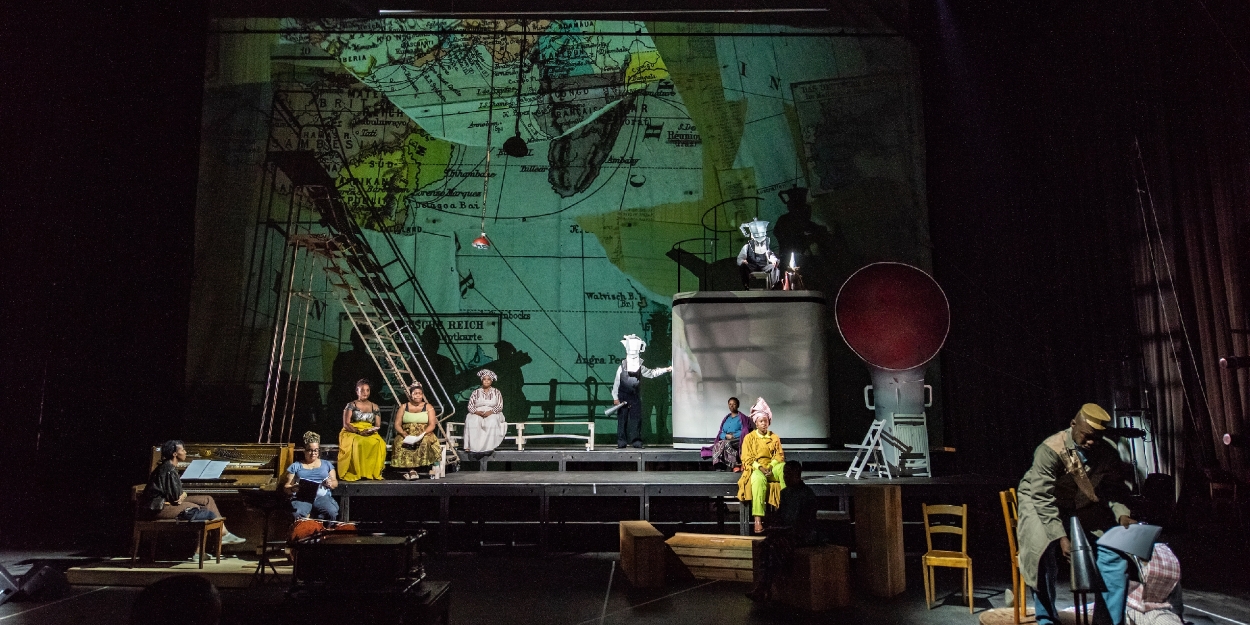Interview: Mwenya Kabwe of THE GREAT YES, THE GREAT NO at The Wallis Annenberg Center For The Performing Arts
Chatting with the dramaturg of this collaboratively-developed piece


“A dramaturg generally works as a kind of advisor to a playwright,” muses Mwenya Kabwe, a theatre-maker currently based in Cape Town, South Africa who served as dramaturg for The Great Yes, The Great No, a production conceived by William Kentridge with Phala O. Phala and Nhlanhla Mahlangu. How, then, does a dramaturg engage with a process in which there is no playwright in the strictest sense of the term? When Kabwe was enlisted to work on the production, there were “bits and pieces of texts” and a few “core images”. “(Kentridge) is an avid reader,” she explains, “he had selected some Russian poetry, some Bertolt Brecht, pieces of Greek classics.” It is hard to imagine such varied pieces of literature finding their way into the same performance.
“There was so much material we needed to find a way to make it coherent. It all felt interesting, but the connections between the pieces felt unclear.” Kabwe briefed me on how the highly-collaborative process behind the show saw separate groups of artists engaging in “jam sessions”, meetings in which they would riff off of each others’ ideas. During this part of the process, Kabwe describes her work as being more corporeal and analog than one might expect. More than once, she found herself physically finding, printing, chopping up, and reordering texts she and her collaborators were interested in exploring.
The show found its central image in the true story of a 1941 ship fleeing Vichy France with a diverse range of artists and intellectuals on board. “We arrived at this journey on a boat as a compositional structure. Without indications of a story in a traditional sense, we had to find a heartbeat— an emotional center.” Throughout this process, Kabwe was excited by the ways different elements could inform each other. “In processes (like this), we work with theatrical materials in a way that is more equal. We generate interplay. How does the set design prompt what might be sung? What ideas do the costumes generate? In this way, many theatrical elements have an equal chance rather than the script being the guiding light.”
The core tenets of the production seem to be reflected in the process of its creation. After all, Kabwe explains, the show is primarily interested in asking audiences to reflect on, “What else is possible?” She elaborates, “Right now, political certainties are being asserted hard. This production is interested in the ambiguous and the indirect as opposed to the ‘capital T’ Truth. It’s an invitation to sit with uncertainty and surprising, evasive ideas.” With a chorus, dancers, musicians, projections, surrealist imagery, and more, Kabwe describes The Great Yes, The Great No as a “show that must be seen. The sonic and visual worlds are so rich and full. It is difficult to talk about. It must be seen.”
The Great Yes, The Great No is part of a 3 part residency of The Centre for the Less Good Idea, Johannesburg Co-Founders William Kentridge and Bronwyn Lace that includes A Defense of the Less Good Idea featuring a talk by William Kentridge and Bronwyn Lace and three short form works at The Nimoy Theater at CAP UCLA and Unsettled Voices at The Broad (museum) with related works that are also a part of Getty “PST ART: Art & Science Collide” including an exhibit and an actual Los Angeles reforestation project.
Comments
Videos

